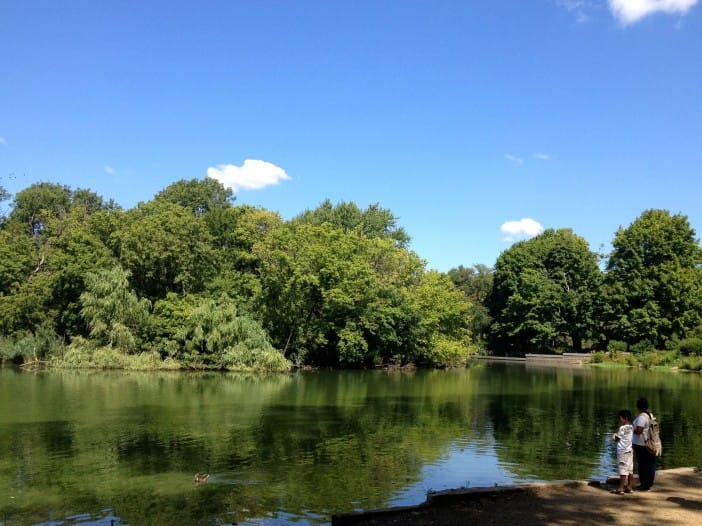Warning: Prospect Park Lake Has High Levels Of Blue-Green Algae; Toxins Can Be Dangerous For Animals & Humans


The New York State Department of Environmental Conservation reported high levels of blue-green algae blooms in Prospect Park Lake last week. Based on lab testing, there are toxins in enough quantities to cause health effects when people and animals come in contact with the water through swimming or drinking, so the DEC recommends staying out of Prospect Park Lake and other bodies of water linked to it.
Blue-green algae, technically known as cyanobacteria, are naturally present in lakes and streams in low numbers. Blue-green algae blooms can occur in freshwater lakes and ponds and can reduce the recreational value of a waterbody, due to unpleasant appearances and odors, and can cause a variety of ecological problems, such as reduced oxygen levels. They also have the potential to form harmful blue-green algal blooms, although the factors that cause blue-green algae to produce toxins are not well understood.
The harmful blue-green algae blooms can cause health effects when people and animals come in contact with them. Symptoms include:
- Nausea and vomiting
- Diarrhea
- Skin or throat irritation
- Allergic reactions or breathing difficulties
The algae blooms can also produce toxins that affect the liver and nervous systems when water is consumed in sufficient quantities. If you suspect you’ve been exposed, seek medical attention immediately.
Blue-green algae can also affect pets, so it’s probably best to keep your dogs from swimming in Prospect Park until the algae stops blooming.




